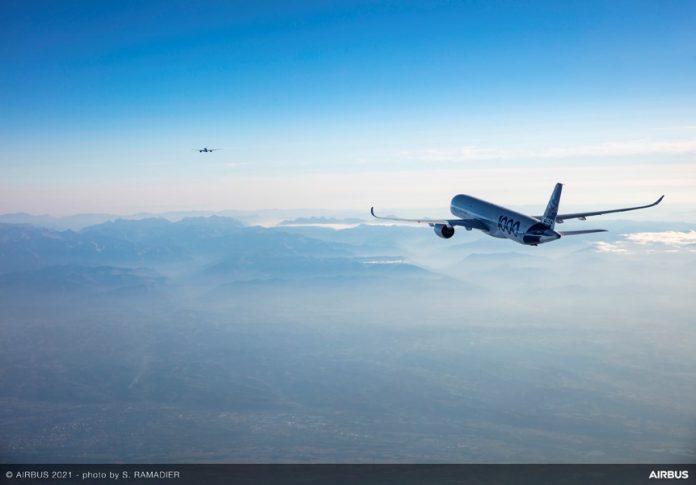Flying in Europe is bouncing back, with the latest Eurocontrol data revealing aircraft movements last week reached 81% of pre-pandemic levels
Ryanair leads the European airline pack
Eurocontrol’s latest analysis covers airline traffic for the week between April 7 and April 13. The analysis found there was an average of 24,648 flights a day, or 81% of the number of flights recorded in the same week in April 2019. The busiest airline was Ryanair, with an average of 2,764 flights a day over the week, followed by easyJet with 1,515 daily flights, Lufthansa with 1,138 daily flights, Turkish Airlines with 1,096 daily flights, and Air France with 901 daily flights.
Over the week, Europe’s busiest airport was Amsterdam (AMS), with an average of 1,135 departing and arriving flights. Amsterdam was followed by London Heathrow (LHR) with 1,119 departing and arriving flights per day, Paris Charles de Gaulle (CDG) with 1,111 departing and arriving flights per day, Frankfurt (FRA) with 1,076 departing and arriving flights per day, and Istanbul (IST) with 1,023 departing and arriving flights per day. With the Easter holiday season in full swing, Europe’s busiest country pairs are Germany – Turkey, followed by Spain – Germany, Spain – UK, Greece – Greece, and Germany – Italy.
Most European airlines are still flying fewer flights than they did in 2019
Ryanair is the only airline to have increased its flights compared to the same week in 2019. Ryanair’s daily average of 2,764 flight last week was up 10% compared to the equivalent 2019 week. Meanwhile, easyJet’s daily flight numbers were down 16% compared to the same week in 2019, while Lufthansa was down 28%, Turkish Airlines was down 15%, and Air France was down 30%.
Moving outside the top five airlines, British Airways operated an average of 709 flights a day between April 7 and April 13, down 26% compared to the same week in 2019. KLM flew a daily average of 709 flights last week, down 19% on the comparable 2019 number. Wizz operated an average of 681 flights last week, down 16% on the equivalent 2019 week. Vueling flew 603 flights a day last week, down a fraction – just 0.3%, on the same week in 2019. Finally, SAS Scandinavian operated an average of 529 flights last week, down 34% compared to the same week in 2019.
Most flights to and from European airports last week were intra-European flights, with Eurocontrol classing 20,048 (or 81% of all flights) as intra-European. The remaining 4,022 flights were intercontinental flights. Breaking down those intercontinental flights, 12% were to or from the Asia-Pacific region, nearly 26% were to or from the Middle East, 25% were to or from North America, and a further 26% were heading to or returning from Africa. But it won’t surprise any aviation news follower that the amount of intercontinental flying to and from Europe remains 33% down on 2019 levels.
But the numbers suggest that flying in Europe is rebounding well, especially considering that European flying lagged much of the rest of the world throughout the pandemic. Europe now appears to be catching up.
























